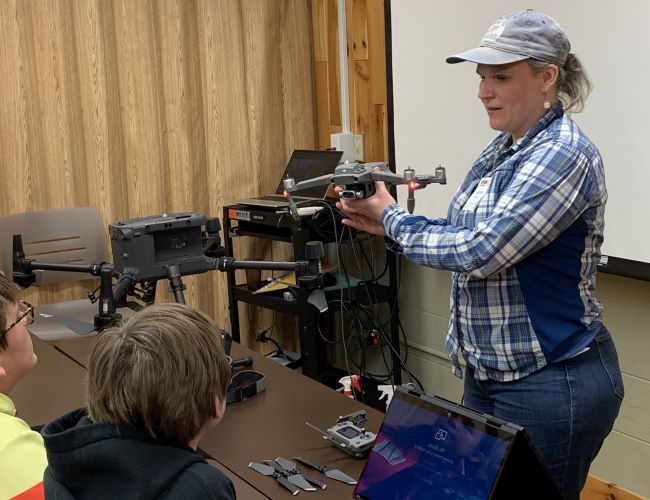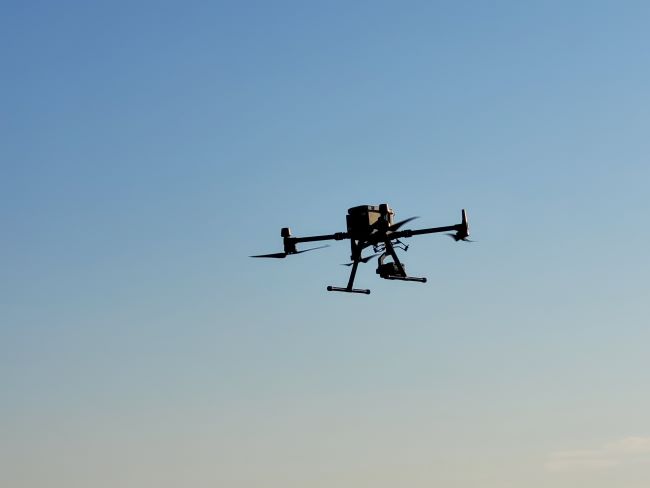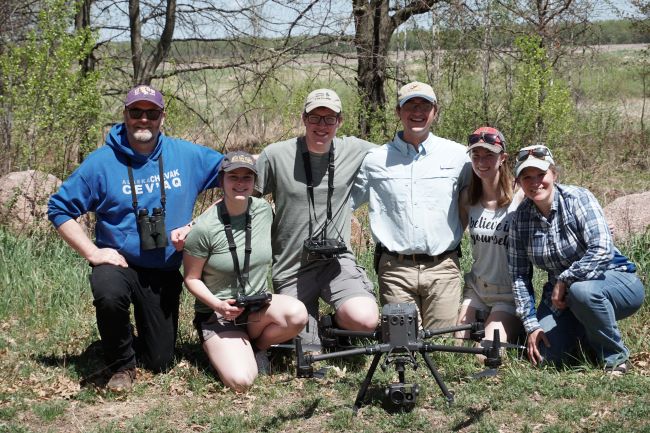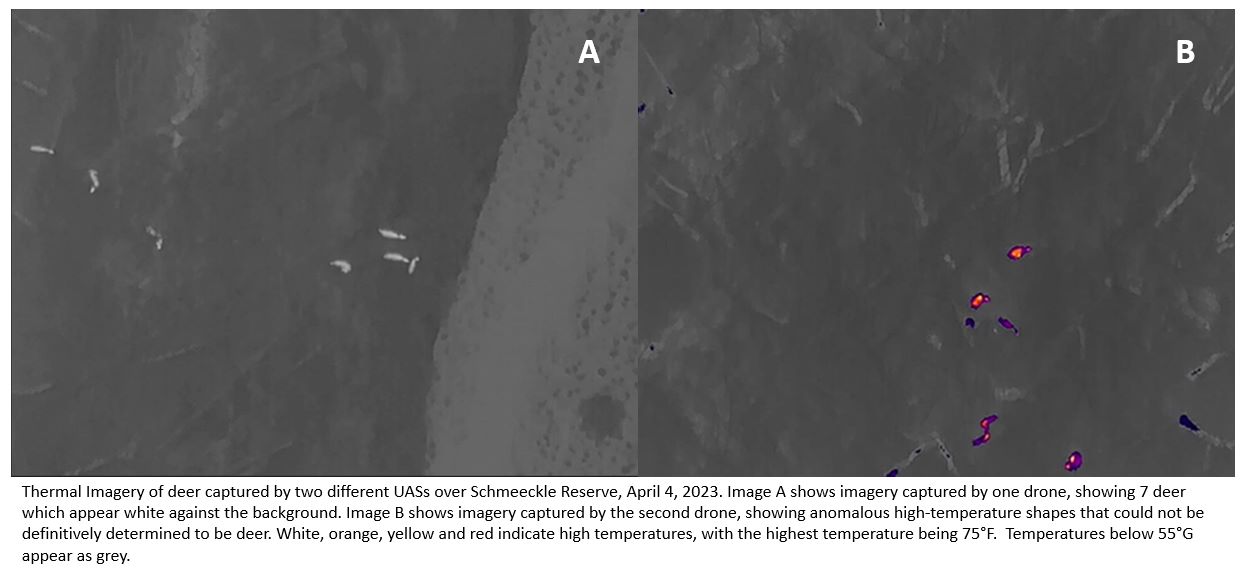by Barbara Dixson
“Deer? What deer?” you might think on some days as you walk in the Reserve, whereas on others you could exclaim, “It’s the Times Square of deer!” We’ve never known just how many deer live in Schmeeckle. The Wildlife Society, a student organization at UWSP, studies the deer in the Reserve but hasn’t had a good population estimate. Enter Jennifer Summers, her colleagues and students, and a pair of drones.
On a cold winter day at 4 a.m., perched on top of a campus building, Jennifer and her intrepid companions launched two drones out over the Reserve. The project took a great deal of planning–complex logistics–and a number of skilled and dedicated people–as well as two bone-chilling hours. Here’s part of Jennifer’s email to Jim Buchholz, laying out what they discovered:
There were 26 deer counted from the thermal imagery videos recorded during the UAS survey. An additional 11 high-temperature anomalies were observed that could not be definitively identified as deer but may have been deer. I am not including them in the ‘official count’ because I can’t be sure they’re deer. If we do count them, that would bring the total to 37.
The WDNR manages deer at the square mile scale. Schmeeckle Reserve is 280 acres, or 0.44 square miles. If we extrapolate the count of 26 deer in Schmeeckle Reserve to a full square mile, we would expect to see 59.1 deer per square mile. The WDNR typically manages for deer numbers at around 35 deer per square mile.

What would make someone want to spend two cold hours high up above the world in the dark and wind? you might ask…
In 2015, when Jennifer was an undergraduate at UWSP, her geography professor taught the class to use what was then part toy/part oddity, the UAF, or UAU, or drone. Because the FAA had not yet invented the drone certification, a drone pilot was required to have a private pilot’s license for flying small aircraft. So the students had to practice inside the gym, tricky, since the GPS doesn’t function there. Turned out Jennifer was good at it, and she was hooked! Nowadays, she’s hooking others, as in the STEAM Day event at Treehaven, pictured above.

Matrice-in-flight is pictured above– The DJI Matrice 300 RTK in flight while in use for a waterfowl detection project. This is one of the same drones used for the Schmeeckle Deer survey. What else has she used drones for? I asked Jennifer. To try to count Coopers hawk eggs high in the forest. Where the elk reek havoc in the cranberry bogs, to see if drones could run them off. These miniature aircraft function like willing assistants in all kinds of undertakings.

Jennifer’s colleagues, including Ben Sedinger, pictured above, and the graduate students who work with them often rely on drone support for their projects. Students can study for their drone licenses on their own, but that test does not include actual flight. So Jennifer now trains students by giving them flight practice.
